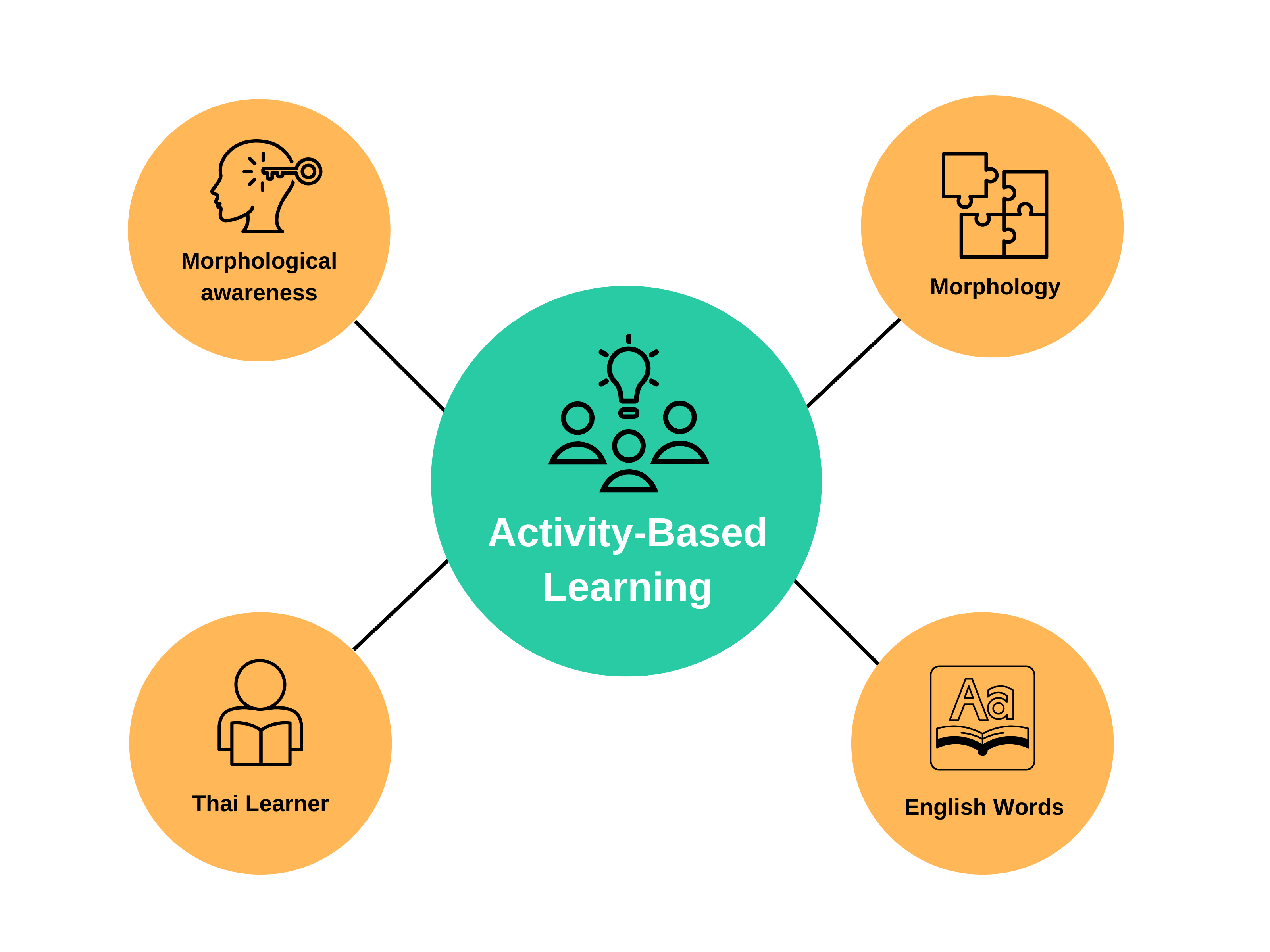Enhancing Thai Learners’ Morphological Awareness of English Words through Activity-Based Learning
Main Article Content
Abstract
Objectives: The purposes of this research were: 1) to examine Thai learners’ morphological awareness of English words before and after implementing activity-based learning, based on a comparison with the 60 percent criterion, and 2) to explore the attitudes of Thai learners towards activity-based learning.
Methods: The target group consists of 11 English major students enrolled in 146265 Morphology and Syntax course during the first semester of the 2022 academic year. The research tools include the morphological awareness pre-test and post-test divided into two parts: 1) morpheme segmentation, and 2) sentence completion with derivational and inflectional affixes. Lesson plans including activities to promote morphological awareness, reflective journal, and a questionnaire to assess learners’ attitudes were also employed as research instruments. Statistics used include percentages, means, and standard deviations.
Results: When considering the pre-test scores, it was found that the overall average scores of the target group did not meet the 60 percent criterion. For the post-test scores, it was revealed that scores for part 1 of the test met the 60 percent criterion, whereas scores for part 2 did not meet the criterion. Regarding learners’ attitude towards activity-based learning, it was generally found that they were at a high level. In addition, the result from reflective journals revealed their positive viewpoints and feeling about activity-based learning.
Application of this study: Learning activities employed in this research can be applied in Morphology course for other languages such as French, Chinese, or Japanese.
Downloads
Article Details

This work is licensed under a Creative Commons Attribution-NonCommercial-NoDerivatives 4.0 International License.
References
Amirjalili, F., & Jabbari, A. A. (2018). The impact of morphological instruction on morphological awareness and reading comprehension of EFL learners. Cogent Education, 5(1), 1-30.
Badawi, M. (2019). The effect of explicit English morphology instruction on EFL secondary school students’ morphological awareness and reading comprehension. English Language Teaching, 12(4), 166-178.
Deeudom, P. (2022). The Effect of Activity-Based Learning to Enhance English Reading Comprehension of Ninth Grade Students. Independent study, M.Ed. in English Language Teaching, Silpakorn University, Thailand. (In Thai)
Duangloi, M. (2015). Factors affecting English reading problems of students in Rajamangala University of Technology Krungthep. Journal of Technical Education Rajamangala University of Technology Thanyaburi, 3(1), 151-165.(In Thai)
Haspelmath, M. & Sims, D. (2010). Understanding Morphology. London: Hachette UK Company.
Hoai N., Jumlongnark, W., & Van, C. (2023). Activity Based Learning with Kahoot for Developing Vietnamese Vocabulary Learning Ability of Students at Mahasarakham University. Academic Journal of Mahamakut Buddhist University Roi Et Campus, 12(2), 567-577. (In Thai)
Jammore, P. (2020). The Development of Learning Activities through Activity Based Learning to Enhance English Communication Skills for Grade Seven Students. Independent study, M.Ed. in Educational Research and Evaluation, Naresuan University, Thailand. (In Thai)
Kallayanamit, S. (2019). Thai learners’ morphological awareness of English complex words and its effects on vocabulary-in-context usage. Journal of Humanities, Naresuan University, 16(2), 1-22.
Kraut, R. (2015). The relationship between morphological awareness and morphological decomposition among English language learners. Read Writ, 28, 873-890.
Lieber, R. (2009). Introducing morphology. New York: Cambridge University Press.
Norarien, P. (2019). Activity Based Learning and Multimedia for Developing Listening and Speaking Ability of Prathomsuksa 2 Students. Master Thesis, M.A. in Curriculum and Instruction, Silpakorn University, Thailand. (In Thai)
Permcharoen, L. (2016). Morphology. In S. Deeyu (Ed.), Language and Linguistics, pp.89-114, Bangkok: Thammasat University Press. (In Thai)
Pongpairoj, N. (2011). English Morphology. Bangkok: Faculty of Arts, Chulalongkorn University. (In Thai)
Talabklang, P. & Thienpermpool, P. (2019). The Development of Vocabulary Learning Achievement Using Activity-Based Learning for Prathomsuksa 2 Students of Wat Khian Khet School, Pathum Thani Province. Rajapark Journal, 13(31), 195-208. (In Thai)
Wongsathian, N. (2020). Word Formation Processes in Thai Outdoor Advertisements. Pasaa Paritat Journal, 35, 166-198. (In Thai)


